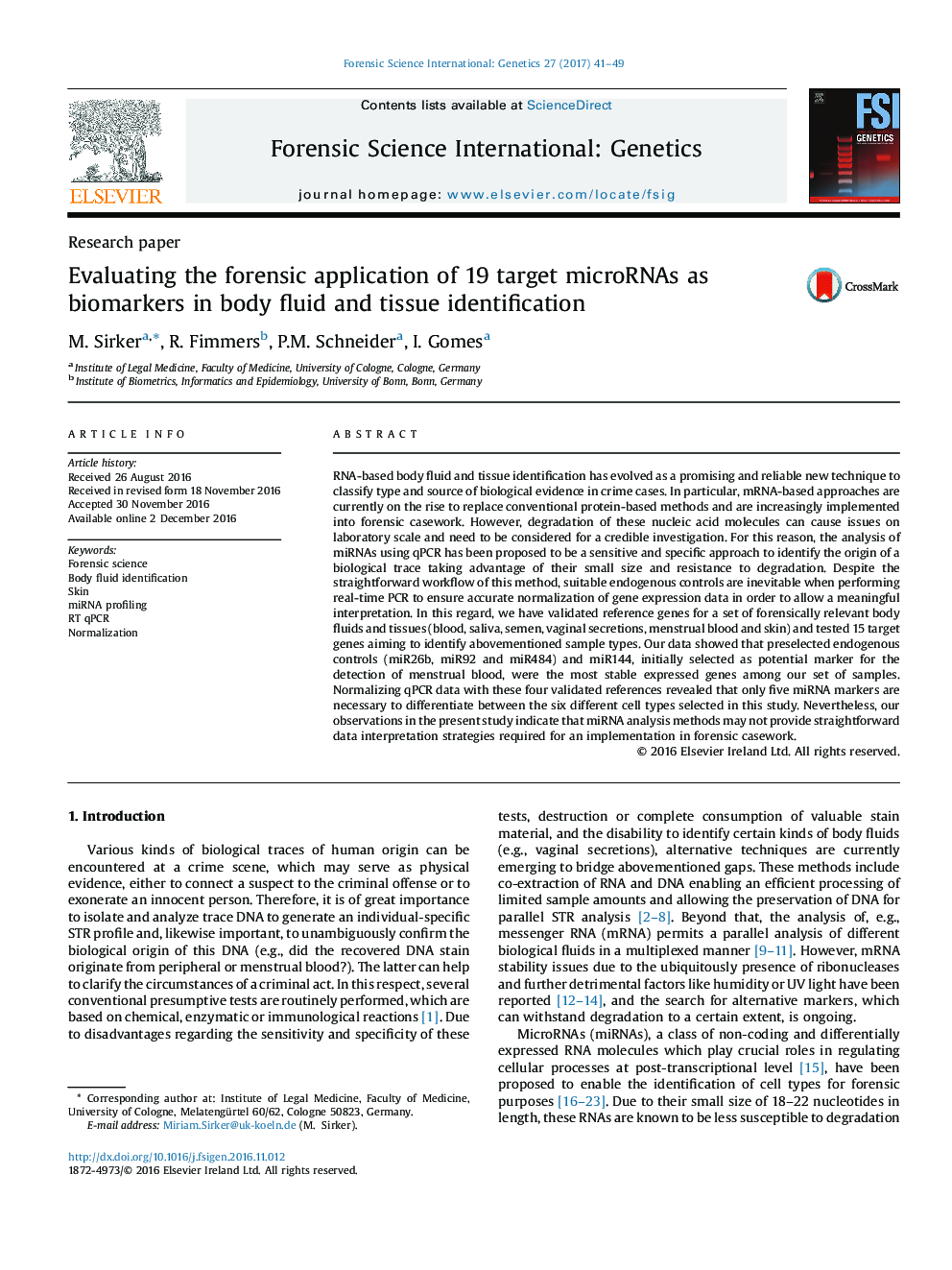| Article ID | Journal | Published Year | Pages | File Type |
|---|---|---|---|---|
| 6462909 | Forensic Science International: Genetics | 2017 | 9 Pages |
â¢Analysis of miRNA markers was explored to differentiate human body fluids and tissues.â¢Validation of reference genes was carried out for a set of relevant body fluids/tissues using qPCR.â¢15 miRNAs for blood, saliva, semen, vaginal secretions, menstrual blood and skin were tested.â¢Only five miRNA markers are necessary to differentiate six different cell types.â¢Perspectives of miRNA analysis for application to forensic casework are discussed.
RNAâbased body fluid and tissue identification has evolved as a promising and reliable new technique to classify type and source of biological evidence in crime cases. In particular, mRNAâbased approaches are currently on the rise to replace conventional proteinâbased methods and are increasingly implemented into forensic casework. However, degradation of these nucleic acid molecules can cause issues on laboratory scale and need to be considered for a credible investigation. For this reason, the analysis of miRNAs using qPCR has been proposed to be a sensitive and specific approach to identify the origin of a biological trace taking advantage of their small size and resistance to degradation. Despite the straightforward workflow of this method, suitable endogenous controls are inevitable when performing real-time PCR to ensure accurate normalization of gene expression data in order to allow a meaningful interpretation. In this regard, we have validated reference genes for a set of forensically relevant body fluids and tissues (blood, saliva, semen, vaginal secretions, menstrual blood and skin) and tested 15 target genes aiming to identify abovementioned sample types. Our data showed that preselected endogenous controls (miR26b, miR92 and miR484) and miR144, initially selected as potential marker for the detection of menstrual blood, were the most stable expressed genes among our set of samples. Normalizing qPCR data with these four validated references revealed that only five miRNA markers are necessary to differentiate between the six different cell types selected in this study. Nevertheless, our observations in the present study indicate that miRNA analysis methods may not provide straightforward data interpretation strategies required for an implementation in forensic casework.
